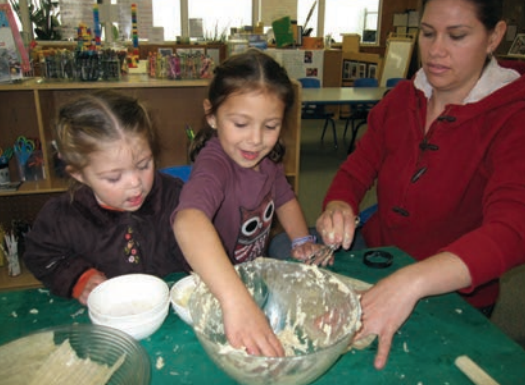16 3.3: Culture and Self-Identity
Culture is a major factor in the constitution of the ability to develop one’s identity. As mentioned throughout this text, culture means the way in which individuals or groups of people handle the raw material of their social and material existence in order to develop their own specific ways of life with their own distinct forms of expression as a network of meaning. Successful identity is the result of having been enabled and empowered to pursue one’s own meaning in life in a process of constant exchange with others who are also endeavoring to build a meaningful existence for themselves. [37]
Cultural identity is the identity or feeling of belonging to a group. It is part of a person’s self-conception and self-perception and is related to nationality, ethnicity, religion, social class, generation, region, or any kind of social group that has its own distinct culture. In this way, cultural identity is both characteristic of the individual but also of the culturally identical group of members sharing the same cultural identity or upbringing.
A range of cultural complexities structure the way individuals operate with the cultural realities in their lives. Cultural identities are influenced by several different factors such as ones religion, ancestry, skin color, language, class, education, profession, skill, family and political attitudes. These factors contribute to the development of one’s identity.
Some might be able to adjust to the various cultures in the world by committing to two or more cultures. It is not required to stick to one culture. People may socialize and interact with people in one culture in addition to another group of people in another culture, although many people interact with others who share the same social identities. [38]
Education, including early childhood education is an important area of culture. Does school help enable and empower young people to develop their own authentic meaning in life which should also entail becoming aware of one’s social reality and of adopting a critical attitude towards existing structures in society? Or is it more inclined to further the development of those qualifications which are more in line with that which is socially acceptable? Schools may be inherently inequitable when those in power believe their understanding of the world is the only legitimate one. It becomes the dominant culture of the school alienating and excluding those in minority groups, which can lead to loss of self-esteem and challenges in being successful in the educational environment. [39]

Identity is formed through direct relation to the people that we interact with, our physical and temporal environment, and the culture that we are a part of from the beginning. We can examine the social and cultural systems that surround us to see how the various dimensions are involved with our self-identity. In this chapter, we examined how the early childhood environment plays a role in the formation of children’s identity development. The chapter also examined the role of the teacher in children’s identity development as well as how teachers’ identity development, both personal and professional, contribute to the early childhood environment.
We leave this chapter asking ourselves important questions:
- What are the ways in which we are involved in children’s identity formation?
- How can we ensure that this involvement is inclusive and supportive of all children?

